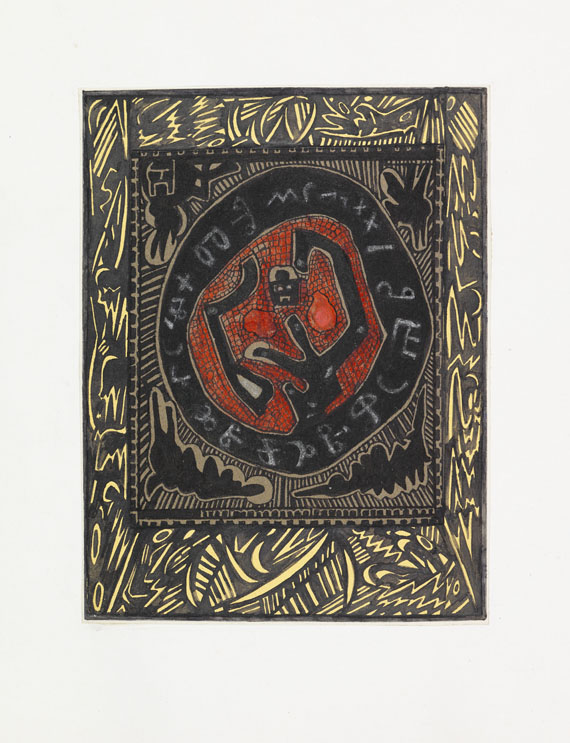Dictionary


Livre d'artiste
The livre d'artist [French: artist's book] is a genre developed in 20th-century France and taken up in German as the Malerbuch. The term designates books illustrated with original prints by well known artists. The artist's contribution is not just illustration but should be regarded as his or her free interpretation or the way he or she has rendered the text in visual terms. A commission for a livre d'artist is usually given by a publisher. The work itself is then published at great expense and in elegant typefaces on hand-milled paper in a limited edition. Among the best known publishers of livres d'artiste were A. Vollard, H. Kahnweiler, A. Skira, E. Tériade und A. Maeght. Some of the most beautiful livres d'artiste are Pablo Picasso's "Histoire naturelle" (1942), Marc Chagall's "Fables de LaFontaine" (1952), Max Ernst's "Une semaine de Bonté" (1934), Georges Braques's "Si je mourais là-bas' (1962), Joan Miró's "Parler seul" (1950), Salvador Dalí's "Les chants de Maldoror" (1934) and Fernand Léger's "Cirque" (1950).
The livre d'artist [French: artist's book] is a genre developed in 20th-century France and taken up in German as the Malerbuch. The term designates books illustrated with original prints by well known artists. The artist's contribution is not just illustration but should be regarded as his or her free interpretation or the way he or she has rendered the text in visual terms. A commission for a livre d'artist is usually given by a publisher. The work itself is then published at great expense and in elegant typefaces on hand-milled paper in a limited edition. Among the best known publishers of livres d'artiste were A. Vollard, H. Kahnweiler, A. Skira, E. Tériade und A. Maeght. Some of the most beautiful livres d'artiste are Pablo Picasso's "Histoire naturelle" (1942), Marc Chagall's "Fables de LaFontaine" (1952), Max Ernst's "Une semaine de Bonté" (1934), Georges Braques's "Si je mourais là-bas' (1962), Joan Miró's "Parler seul" (1950), Salvador Dalí's "Les chants de Maldoror" (1934) and Fernand Léger's "Cirque" (1950).
Offers for The Book of Modernism
Headquarters
Joseph-Wild-Str. 18
81829 Munich
Phone: +49 89 55 244-0
Fax: +49 89 55 244-177
info@kettererkunst.de
Louisa von Saucken / Undine Schleifer
Holstenwall 5
20355 Hamburg
Phone: +49 40 37 49 61-0
Fax: +49 40 37 49 61-66
infohamburg@kettererkunst.de
Dr. Simone Wiechers / Nane Schlage
Fasanenstr. 70
10719 Berlin
Phone: +49 30 88 67 53-63
Fax: +49 30 88 67 56-43
infoberlin@kettererkunst.de
Cordula Lichtenberg
Gertrudenstraße 24-28
50667 Cologne
Phone: +49 221 510 908-15
infokoeln@kettererkunst.de
Hessen
Rhineland-Palatinate
Miriam Heß
Phone: +49 62 21 58 80-038
Fax: +49 62 21 58 80-595
infoheidelberg@kettererkunst.de
We will inform you in time.




